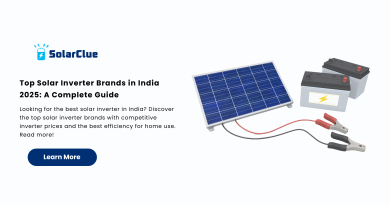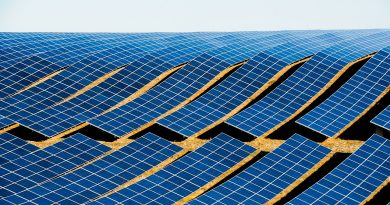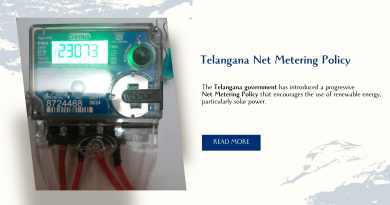On-Grid Solar System Operation
Solar energy is becoming increasingly popular as a cleaner and more sustainable alternative to traditional sources of power. One of the most common ways to harness this abundant resource is through the use of on-grid solar systems. In this blog post, we will explore how an On-Grid Solar System Operation happens and its benefits in our quest for a greener future.
Table of Contents
Understanding On-Grid Solar System and its Operation
An on-grid solar system, also known as a grid-tie or grid-connected system, is a solar power generation system that is directly connected to the local utility grid. This implies that the homeowner or business owner can actively use the solar energy produced by the system, and any excess energy can be sent back to the grid.
Components of an On-Grid Solar System
To understand how an On-Grid Solar System Operation happens, let’s first take a look at its key components:
1. Solar Panels
Solar panels, also referred to as photovoltaic (PV) modules, are the heart of any solar system. These panels are made up of multiple solar cells that convert sunlight into direct current (DC) electricity. The number of panels required depends on the energy needs of the household or business.
2. Inverter
Transitioning from the solar panels, the inverter plays a critical role in converting the DC electricity they generate into alternating current (AC) electricity. Subsequently, this AC electricity, serving as the standard form used in our homes and businesses, ensures compatibility with the utility grid, thanks to the inverter.
3. Utility Meter
Utilize the utility meter to measure the amount of electricity consumed from or sent back to the grid. When your solar system generates more electricity than you consume, actively send the excess energy back to the grid, reflecting it as a credit on your utility bill.
How does an On-Grid Solar System Work?
On-Grid Solar System Operation will be understandable when we understand the components, let’s delve into how an on-grid solar system works:
1. Solar panels capture sunlight: When sunlight falls on the solar panels, the solar cells absorb the photons and convert them into DC electricity. The more sunlight the panels receive, the more electricity they can produce.
2. Inverter converts DC to AC: Transitioning from the solar panels, send the DC electricity generated directly to the inverter. The inverter actively converts this DC electricity into AC electricity, facilitating the power of your appliances, lighting, and other electrical devices.
3. Power consumption: Transitioning from the inverter, actively consume the AC electricity it produces in your home or business. Furthermore, the utility grid seamlessly supplements any electricity needed beyond what your solar system generates.
4. Sending excess electricity to the grid: When your solar system produces more electricity than you consume, actively send the excess energy back to the utility grid. This surplus energy is then utilized by other consumers within the grid, effectively reducing their reliance on traditional energy sources.
5. Net metering: The utility meter measures the flow of electricity. In times when your solar system generates more electricity than you consume, the utility meter will spin backward, effectively giving you a credit on your utility bill. This process is known as net metering and allows you to save money on your electricity bills.
6. Grid as backup: During times when your solar system is not generating enough electricity, such as at night or on cloudy days, you can draw electricity from the utility grid, just as you would with a traditional electricity connection. The grid acts as a backup when your solar system is not meeting your energy needs.
Benefits of an On-Grid Solar System
In On-Grid Solar System Operation, there are several advantages to installing an on-grid solar system:
1. Economic savings: By generating your own electricity, you can significantly reduce your monthly electricity bills. In addition, net metering allows you to earn credits for the excess electricity you produce, providing further cost savings.
2. Environmental benefits: Moreover, on-grid solar systems produce clean and renewable energy, effectively reducing greenhouse gas emissions and dependence on fossil fuels. By installing a solar system, you actively contribute to mitigating the harmful effects of climate change.
3. Energy independence: Generating your own electricity means less reliance on the utility grid. This provides a sense of energy independence and security, particularly during power outages or emergencies.
4. Sustainable investment: Installing an on-grid solar system is not only an investment in your energy future but also increases the value of your property. Solar panels have a long lifespan and require minimal maintenance, making them a sustainable investment in the long run.
Conclusion
Embrace a sustainable future with SolarClue® as you consider on-grid solar systems, providing a practical and environmentally friendly solution to our growing energy needs. Harness the power of the sun to generate clean and renewable electricity, simultaneously reducing our carbon footprint. The synergy of solar panels, an inverter, and the utility grid enables seamless integration of solar energy into our homes and businesses. When you invest in an on-grid solar system with SolarClue®, you not only unlock economic benefits but also actively contribute to a sustainable and greener future for generations to come. Join the solar revolution today with SolarClue® guiding the way towards a brighter and more sustainable energy landscape.
Frequently Asked Questions
An on-grid solar system is a type of solar power setup that is connected to the electrical grid, allowing users to generate electricity from solar panels and feed excess power back into the grid.
To begin with, on-grid solar systems generate electricity from sunlight using solar panels. Subsequently, the generated power is converted into usable electricity and supplied to the home or business. Additionally, any surplus electricity can be sent back to the grid.
The main components include solar panels, inverters, mounting structures, and a grid connection. Inverters play a crucial role in converting the direct current (DC) produced by solar panels into alternating current (AC) for household use.
On-grid systems are preferred in areas with a reliable electrical grid since they allow users to benefit from grid support during low sunlight periods and sell excess power back to the grid.
Unlike off-grid systems, on-grid systems usually do not require energy storage (batteries) because they can draw power from the grid when solar generation is low.
Additionally, most on-grid systems automatically shut down during a power outage to prevent backfeeding into the grid, ensuring the safety of utility workers. Moreover, some systems may have backup power options.
On-grid solar systems generate less power during cloudy days or at night since they rely on sunlight. However, users can still draw power from the grid when needed.
Furthermore, many regions offer incentives such as tax credits, rebates, or feed-in tariffs for on-grid solar installations. These incentives aim to promote the adoption of renewable energy.
Net metering allows on-grid solar system owners to receive credits for the excess electricity they feed back into the grid. These credits can offset their electricity bills when their solar panels generate less power.
The payback period for on-grid solar systems varies based on factors like system size, local electricity rates, and available incentives. On average, many users see a return on investment within 5 to 10 years.



